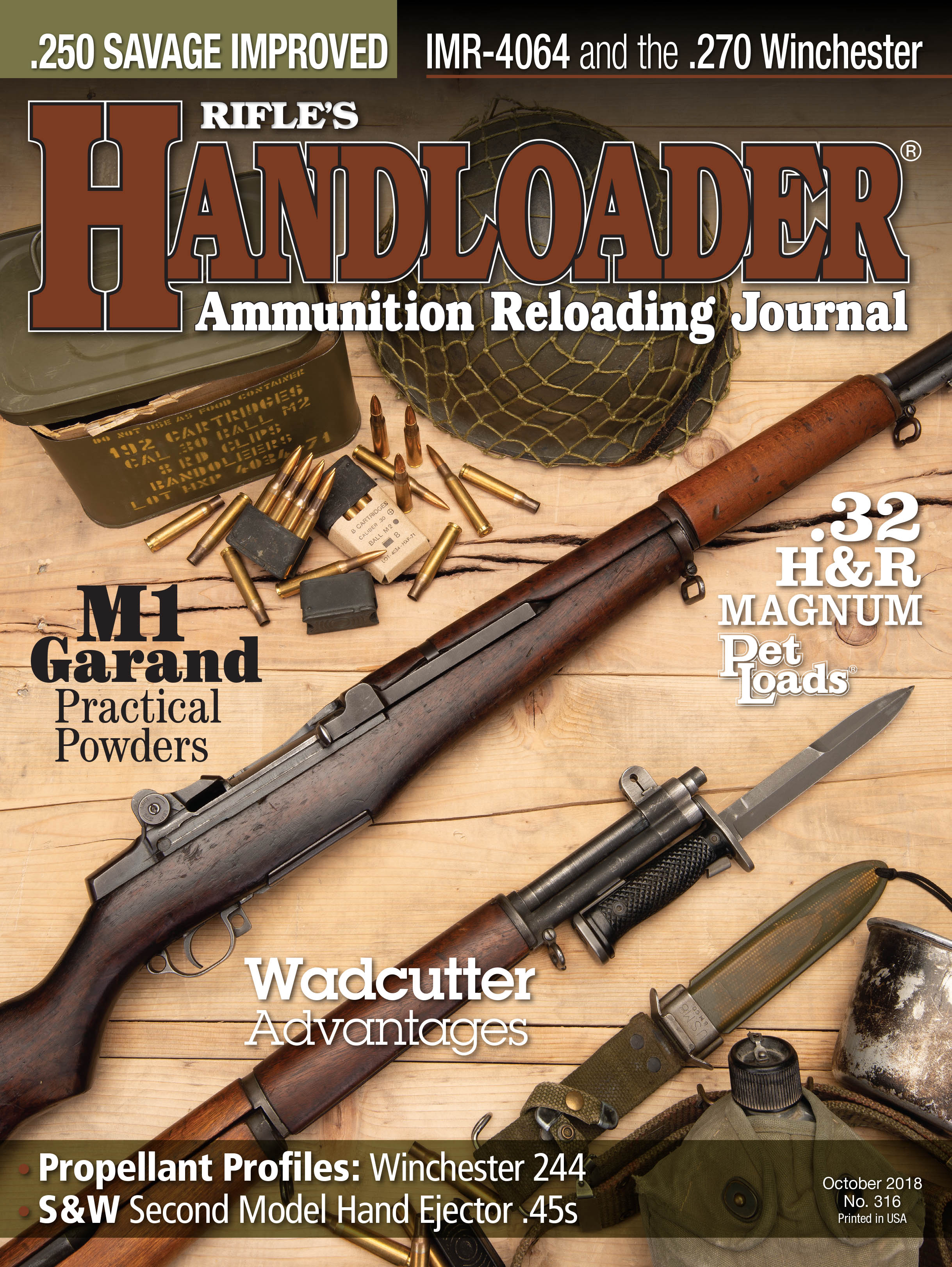Mike's Shootin' Shack
Smith & Wesson Second Model Hand Ejector .45s
column By: Mike Venturino | October, 18
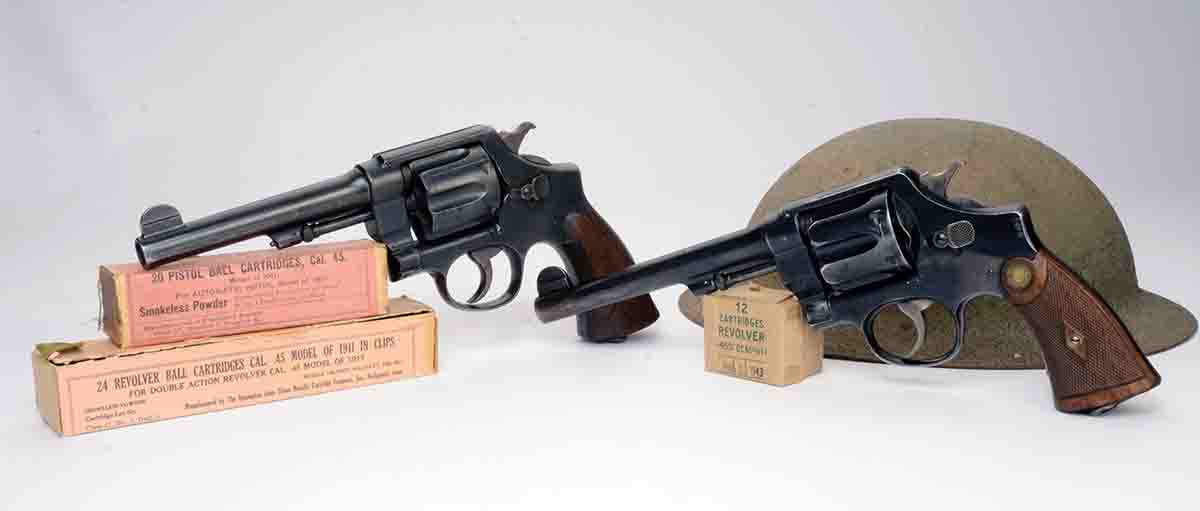
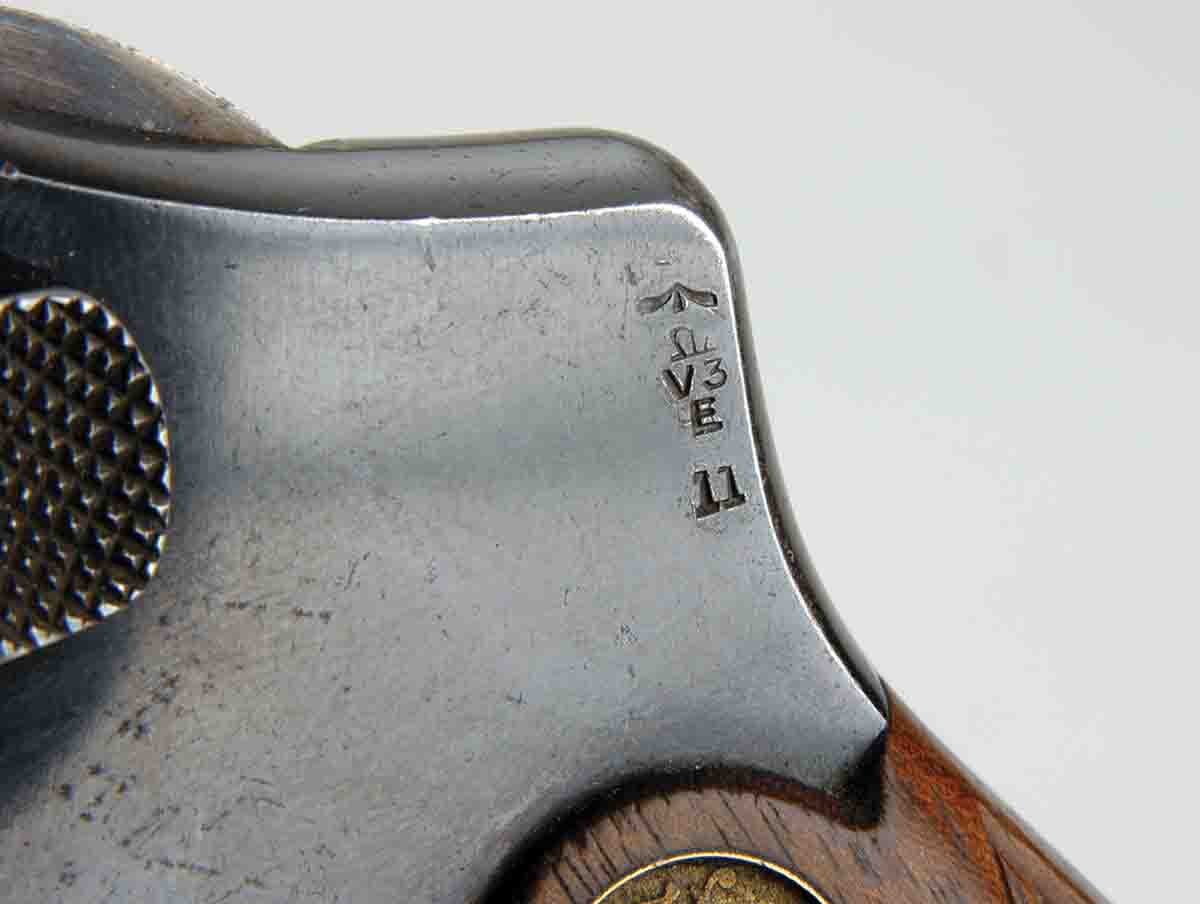
For the civilian market, between 1915 and 1940 Smith & Wesson made and shipped only 17,510 Second Model Hand Ejectors, 727 of which were made in .45 Colt. Conversely, the company sold more than 70,000 to the British as .455s. The source for these figures is Roy Jinks’ book History of Smith & Wesson (1977). Jinks also points out that 724 of those were made for the Canadian government and were chambered in .45 Colt.
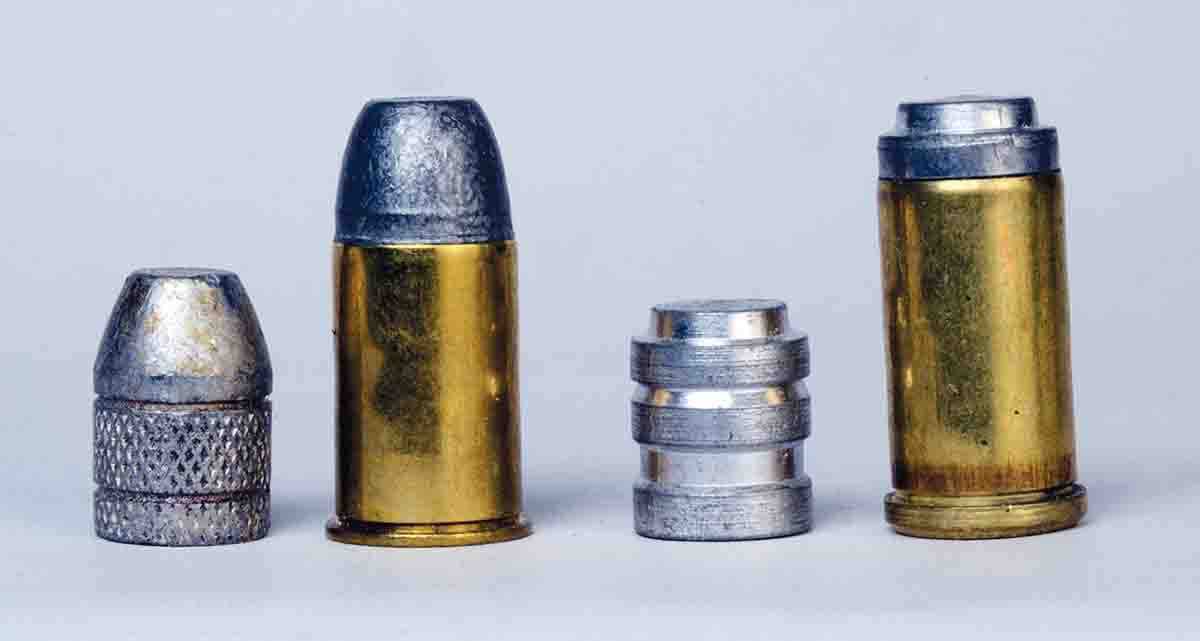
The next military contract came from the U.S. government after war was declared on Germany in April of 1917. Because the Smith & Wesson factory was already tooled up to produce large-frame .45-caliber revolvers, the company was quickly ordered to provide them chambered for the country’s relatively new .45 Auto handgun cartridge. With the new cartridge being of rimless design, special “half-moon” clips were developed to hold three rounds each, giving the revolver’s star extractor something on which to push. These .45 Autos were all made on the basic Second Model Hand Ejector to the tune of 163,476 for the military and were designated U.S. Model 1917 revolvers. After World War I the civilian market for 1917s was strong enough that the company kept them in production until 1949, topping out production at more than 210,000. (Again, these figures are drawn from Jinks’ book.) Civilian Model 1917 versions only differed from the military versions by having checkered stocks instead of plain walnut.
All Smith & Wesson Model 1917s had 5.5-inch barrels with the trademark S&W “half-moon” front sight coupled with a groove down the revolver’s topstrap to serve as a rear sight. The same sight arrangement was on all the .455 Second Model Hand Ejectors, but all of these had 6.5-inch barrels. Some civilian Second Model Hand Ejectors also had 4- and 5-inch barrel lengths. All .455s and .45 Auto Second Model Hand Ejectors were also fitted with lanyard loops on the bottom of the grip frame.
Now here’s a statement that obviously brings up a conundrum: If today a shooter finds a Second Model Hand Ejector .45 other than a Model 1917, it is likely to be chambered in .45 Colt. How can that be when no more than 1,500 or so were made at the factory? The answer is that many of the .455s were reimported to the U.S. after the world wars, but factory .455 loads were rare. So gunsmiths lengthened their chambers to accommodate .45 Colt ammunition. More than 40 years ago, I had one such Second Model Hand Ejector and remember it shooting very well.
Nowadays, having perhaps at least a few “collector chromosomes” floating about in my DNA, I wanted an unaltered .455 Second Model Hand Ejector and, with a bit of searching, found one complete with holster and cleaning rod. Its factory letter indicates that it went directly from Smith & Wesson to the Canadian government in 1916. It also features the little proof stamps all firearms entering Britain get. Overall condition is outwardly excellent, and the barrel bore is perfect. It has made a nice, historical shooter for me.
My experiences with Smith & Wesson Model 1917s have not gone so well. Several that were owned in my younger days had pitted bores and thusly were not capable of adequate precision, especially considering that home-cast, lead alloy bullets were all I could afford for them. The same thing happened with the latest Smith & Wesson 1917 bought about 10 years ago. In dim light, its barrel looked good if not perfect. It wasn’t. In use it tumbled all lead-alloy bullets while shooting at least reasonably well with jacketed bullets.
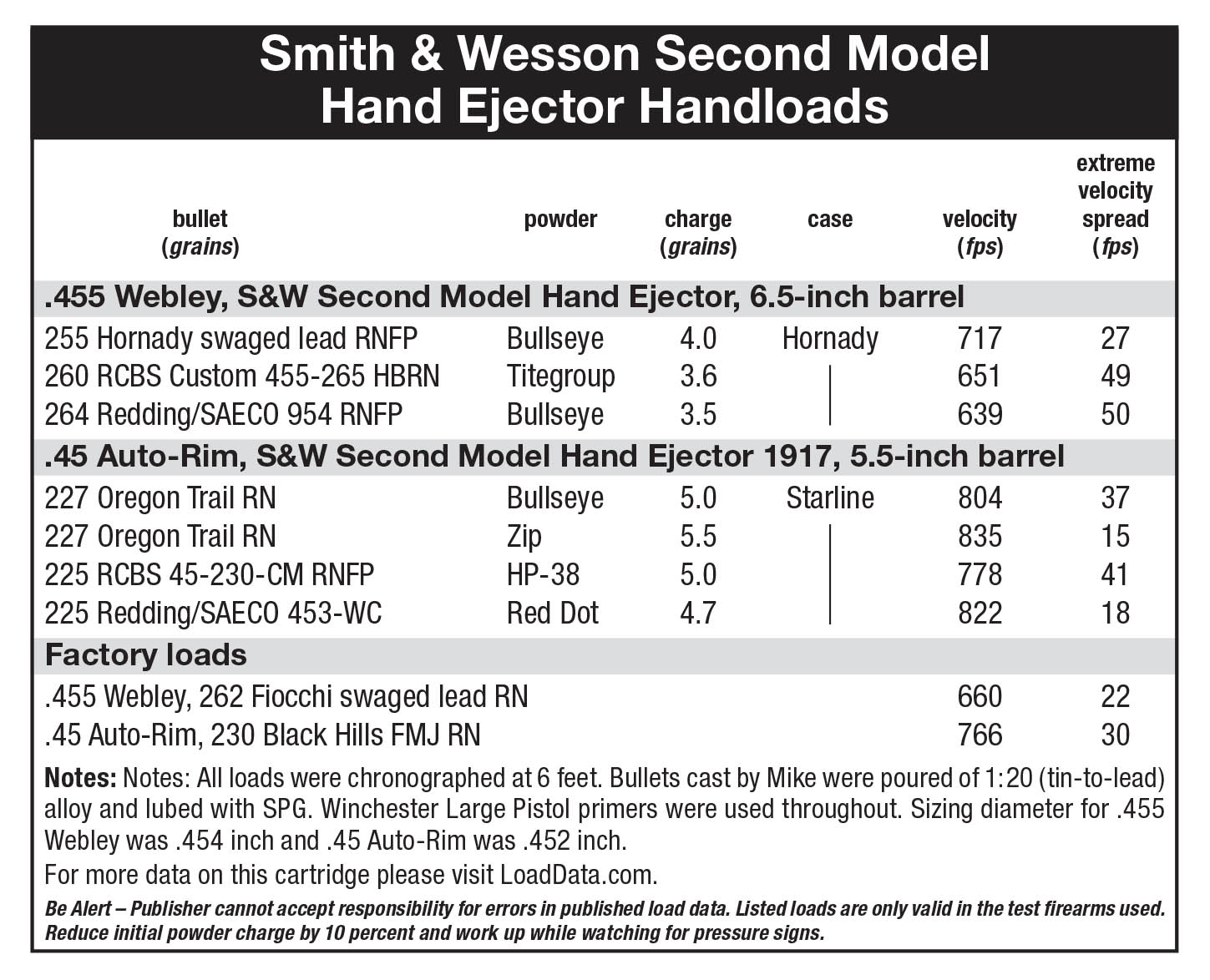
Factory ammunition for the .455 Webley is not common, but Fiocchi of Italy offers it with 262-grain lead-alloy bullets and, at least for a while, Hornady made some for Graf & Sons of Mexico, Missouri. Hornady’s .455 loads carried 265-grain lead-alloy bullets. Both of those factory loads chronographed about 650 fps.
After minimum handloading development, two basic combinations were settled upon for my Second Model .45s. The .455’s is Hornady’s 255-grain swaged-lead RNFP bullet in Hornady brass over 4.0 grains of Bullseye. Velocity is about 720 fps. For the 1917 I eschew .45 ACP cases, instead preferring Starline’s .45 Auto-Rim cases. With this brass my favorite load is 4.7 grains of Red Dot with Redding/SAECO bullet No. 453, a 225-grain full wadcutter.
As much as I would dearly love to encounter one of those less-than-1,500 Second Model Hand Ejector .45 Colts, that is not likely to happen. Still, these two on hand suffice for my “collecting and shooting” chromosomes.


